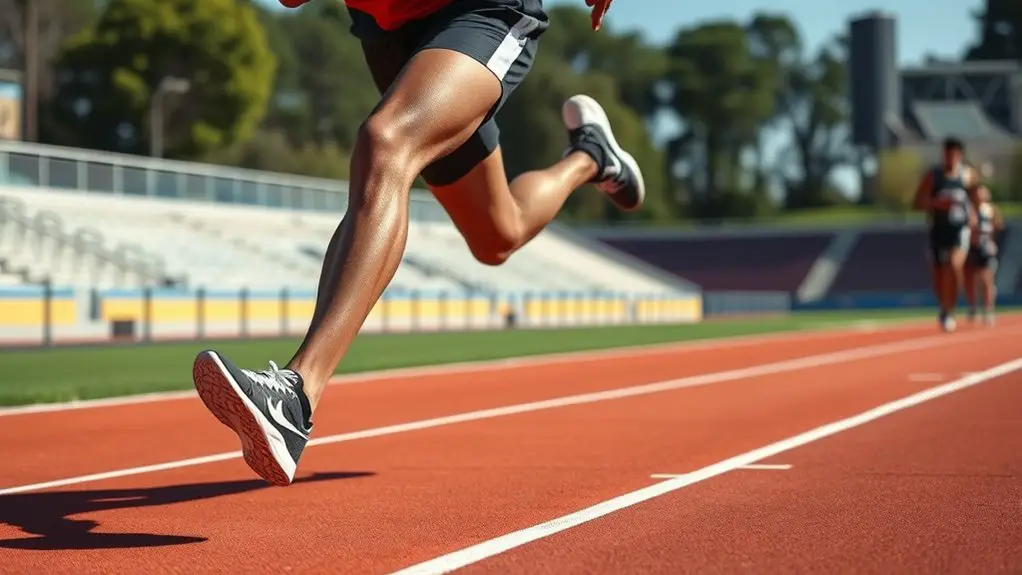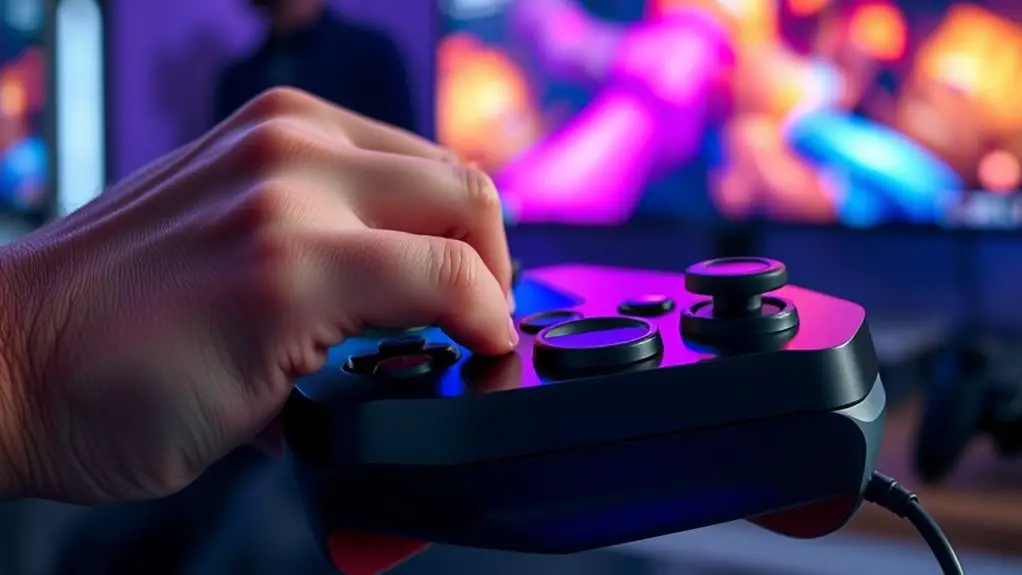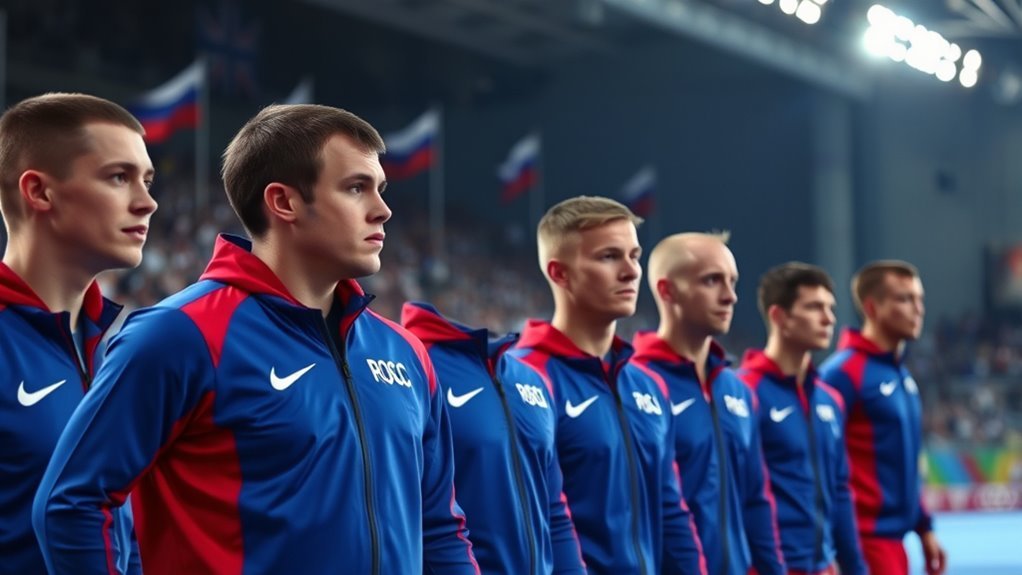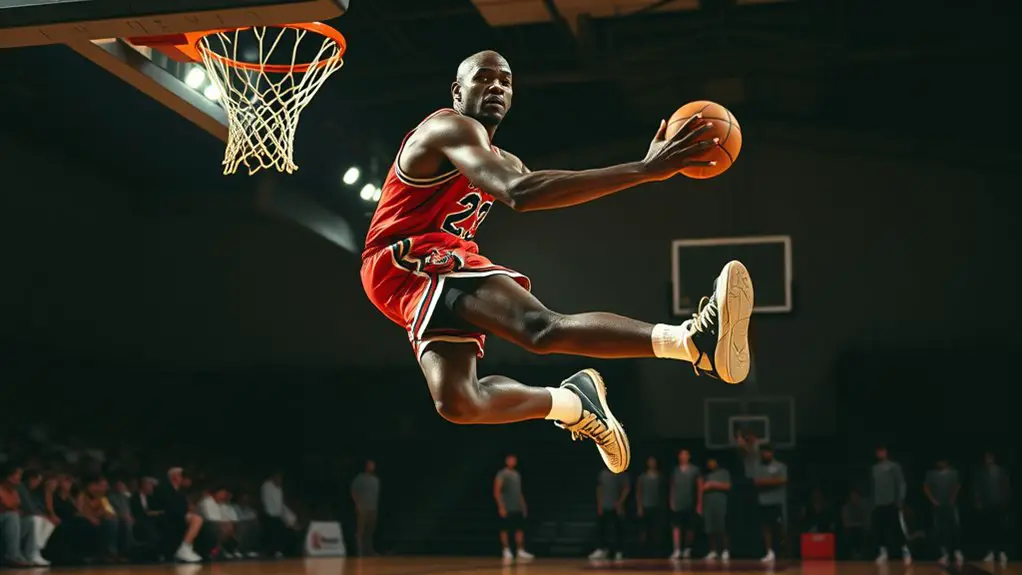Limb length greatly impacts your sports performance. Longer limbs can give you advantages in reach and power, particularly in sprinting and swimming. On the other hand, shorter limbs enhance your agility and speed, helping with quick direction changes. Understanding your limb length can help you tailor your training strategies to fit your strengths. To optimize your performance and learn how to make the most of your unique physique, keep exploring the nuances of limb length in sports.
Understanding Limb Length and Its Definition
Limb length plays an essential role in various physical activities and sports. You might not realize it, but limb length variations can greatly impact your athletic performance. It's about how your body is built and how those proportions affect your movement and capabilities. Whether you're jumping, throwing, or swimming, your limb length influences your reach, leverage, and overall efficiency in executing techniques.
Longer limbs might give an advantage in certain sports, while shorter limbs could enhance agility and speed in others. Understanding your unique limb length and its implications can empower you to harness your strengths effectively. It's not just about being tall or short; it's about how you can use what you've got to maximize your potential. Embracing these variations allows you to find your niche in the sporting world, enabling you to pursue your passion with confidence and freedom.
The Role of Limb Length in Sprinting Performance
When it comes to sprinting, your limb length can considerably impact your performance. Longer limbs often provide advantages in both stride length and power, allowing for faster acceleration and speed. Understanding this relationship can help you optimize your training and racing strategies. Incorporating acceleration drills into your training can further enhance your performance by improving your initial burst and top speed.
Power and Speed Correlation
Although athletes come in all shapes and sizes, the relationship between limb length and sprinting performance is particularly intriguing. You might wonder how this affects your own speed. Longer limbs can enhance power generation, allowing for more forceful pushes off the ground. This means you can tap into explosive speed tactics that maximize your sprinting potential. However, it's not just about length; it's about how effectively you use it. If you've got those longer limbs, you can leverage them for greater acceleration, but it's crucial to focus on technique and form. Ultimately, whether you're short or tall, finding your unique rhythm is key to releasing your true speed and power in sprinting.
Stride Length Advantages
While athletes of all heights can excel, those with longer limbs often benefit from increased stride length, which plays a significant role in sprinting performance. If you're looking to optimize your stride, consider these key advantages:
- Enhanced Speed: Longer strides can translate to covering more ground with each step.
- Efficiency: Proper biomechanics analysis shows that longer limbs can lead to better energy utilization during sprints.
- Acceleration: Increased stride length can help you reach top speed faster.
- Competitive Edge: Athletes with longer limbs often have a natural advantage in sprinting events.
Limb Length and Swimming Efficiency
Limb length plays an essential role in swimming efficiency, as longer limbs can enhance stroke reach and reduce drag in the water. If you've got longer arms and legs, you'll likely find that your swimming techniques can be more effective, allowing you to glide through the water with less effort. This can lead to better body positioning, which is vital for maintaining speed and minimizing resistance.
With a streamlined body position, your longer limbs can help you cover more distance per stroke, giving you a significant advantage in races. You'll also find that the ability to stretch out during each stroke can improve your overall rhythm and pacing, making each lap feel a little easier. Embracing your unique limb length can empower you to refine your swimming techniques, ultimately leading to improved performance and a greater sense of freedom in the water. Enjoy the journey of discovering your potential!
Impact on Jumping Ability in Athletics
When evaluating athletic performance, the length of your limbs can greatly influence jumping ability. Your limb length can affect your jumping mechanics, determining how high you can achieve in your vertical leap. Here are some key points to reflect on:
- Longer limbs can provide a greater range of motion, enhancing your power output.
- The leverage created by limb length can optimize force application during takeoff.
- Shorter limbs may allow for quicker movements, aiding in explosive jumps.
- Your unique body proportions play an important role in your overall jumping technique.
Ultimately, while limb length can offer advantages or disadvantages, it's your technique and training that can make the most significant difference. Embracing your unique body structure and focusing on refining your jumping mechanics will empower you to release your full potential in athletics. Remember, it's not just about how long your limbs are, but how effectively you use them! Incorporating exercises like plyometric box jumps can further enhance your explosive power and vertical leap.
Limb Length Considerations in Team Sports
In team sports, the length of your limbs can considerably impact your effectiveness on the field or court. Your limb length influences not just your personal performance but also how you fit into team dynamics and positional roles.
| Limb Length | Positional Advantage | Example Sport |
|---|---|---|
| Shorter | Agility, quick movements | Basketball, Soccer |
| Average | Versatile, balanced skills | Football, Hockey |
| Longer | Reach, power in physicality | Volleyball, Rowing |
Understanding these advantages allows you to better embrace your strengths and contribute to the team. If you've got longer limbs, you might excel in positions requiring reach and strength. Conversely, shorter limbs can enhance agility and speed, perfect for fast-paced roles. Embracing your limb length means recognizing how it can elevate your game and the team's overall success.
The Influence of Limb Length on Endurance Events
Athletes competing in endurance events face different challenges compared to those in team sports, where agility and speed often take precedence. Limb length can notably influence your performance in these long-distance activities. Here's how it plays a role:
- Longer limbs can enhance stride length during running.
- They may lead to more efficient oxygen utilization, essential for endurance training.
- You might experience different physiological adaptations, affecting your stamina and recovery.
- Limb length can impact your overall body mechanics, influencing energy expenditure.
- Incorporating high-intensity interval training can complement the advantages of limb length by further improving your VO2 max.
While a longer limb may offer certain advantages, it's important to remember that successful endurance athletes come in all shapes and sizes. The key is to focus on your unique strengths and optimize your training to suit your body. Whether you're tall or short, embracing your individuality can set you free to excel in your endurance pursuits.
Biomechanical Advantages of Longer Limbs
While many factors contribute to athletic performance, longer limbs can provide distinct biomechanical advantages that enhance movement efficiency. When you think about limb proportions, it's easy to see how longer legs can help in activities like running and jumping. With greater stride length, you naturally cover more ground with each step, translating to faster speeds. Additionally, longer arms can enhance reach, making it easier to execute powerful movements in sports like swimming or basketball. Incorporating strength training exercises such as squats and deadlifts can further capitalize on these advantages by building the necessary muscle strength to support optimal limb function.
These advantages don't just grant a mechanical edge; they can also boost your confidence. You'll feel more capable and free in your movements, allowing you to tap into your full athletic potential. However, remember that while limb length plays a role, it's just one piece of the puzzle. Combining these biomechanical perks with skill, training, and determination will truly set you apart in your athletic journey.
Agility and Speed: The Case for Shorter Limbs
When it comes to agility and speed, shorter limbs can actually give you a competitive edge. With less distance to cover, making quick direction changes becomes easier and more efficient. This could be why many athletes in fast-paced sports tend to excel with a more compact build. Additionally, strength training enhances muscle power for directional changes, which can further benefit athletes with shorter limbs.
Shorter Limbs Advantage
Although longer limbs are often celebrated for their reach and stride, shorter limbs can provide distinct advantages in agility and speed. You might find that these short limb advantages contribute to your athletic performance in several ways:
- Quick acceleration: Shorter limbs often allow for faster starts and quicker bursts of speed.
- Enhanced balance: A lower center of gravity helps maintain stability during rapid movements.
- Faster turnover: Shorter strides can lead to more frequent footfalls, promoting quicker pacing.
- Improved maneuverability: Less distance to cover in your movements can facilitate sharp turns and swift changes in direction.
Quick Direction Changes
As you navigate the fast-paced world of sports, quick direction changes become essential for outmaneuvering opponents. Shorter limbs can enhance your ability to execute quick footwork and agile maneuvers, giving you the edge you crave. When you're able to pivot swiftly, dodge effortlessly, and accelerate in any direction, freedom in movement becomes your reality. This agility allows you to respond instantly to the dynamics of the game, turning potential setbacks into scoring opportunities. With shorter limbs, your center of gravity is more manageable, enabling rapid changes that keep your competition guessing. Embrace the power of your physique; harnessing that agility can transform your performance and elevate your game to new heights. Don't underestimate the impact of those quick, precise movements!
Training Strategies Tailored to Limb Length
Understanding how limb length impacts sports performance is essential for developing effective training strategies. You can maximize your potential with individualized training that caters to your unique body structure. Here are some tailored strategies to ponder:
Recognizing the influence of limb length on sports performance is key to crafting personalized training approaches.
- Focus on limb specific workouts: Design exercises that enhance the strengths of your limb length.
- Incorporate flexibility training: Improve range of motion for better agility and speed.
- Utilize resistance training: Build muscle strength to support your body mechanics.
- Practice sport-specific drills: Hone skills that align with your limb proportions for peak performance. Additionally, integrating mobility training can enhance overall performance and reduce injury risk.
Genetic Factors and Limb Length Variability
Genetic factors play a crucial role in determining limb length, influencing not only physical appearance but also athletic performance. You might not realize how much your genes shape your body's proportions, affecting everything from your stride to your reach. These genetic influences create limb length variations that can give some athletes a natural advantage in certain sports.
For instance, longer limbs may enhance your speed and jumping ability, while shorter limbs can improve agility and control. Embracing your unique genetic makeup can empower you to train more effectively, focusing on your strengths. Additionally, understanding the differences between strength and endurance training can help you tailor your workouts to maximize your performance based on your limb length.
Understanding how these factors work can help you appreciate your potential, regardless of your limb length. Celebrate what you've got and remember: while genetics play a role, dedication and effort can often outweigh any physical limitations. So, get out there, and make the most of what you've been given!
Frequently Asked Questions
How Does Limb Length Affect Injury Risk in Athletes?
Did you know that athletes with longer limbs have a 25% higher risk of certain injuries? This occurs due to different injury mechanisms, where their unique biomechanics can create added stress on joints. While longer limbs can provide biomechanical advantages in speed and reach, they can also lead to imbalances during movement. Understanding this duality helps you navigate your training and injury prevention strategies, allowing you to enjoy your sport with greater freedom.
Are There Any Sports Where Limb Length Does Not Matter?
In some sports, limb length doesn't play a significant role. For instance, in gymnastics performance, athletes of various heights can excel based on skill and technique rather than limb length. Similarly, swimming success often depends more on technique and endurance than on limb proportions. So, if you're passionate about either sport, you can focus on honing your skills instead of worrying about your body's dimensions. Embrace your unique attributes and enjoy the journey!
Can Limb Length Be Altered Through Surgery or Training?
Imagine stretching a rubber band, hoping to create something new. While surgical techniques can indeed alter limb length, they come with risks and aren't always guaranteed to deliver the desired outcome. Training methods can enhance your strength and agility, but they can't change your bone structure. You've got to find freedom in your unique body, embracing your natural abilities rather than chasing an ideal that may not be attainable.
What Role Does Body Composition Play Alongside Limb Length?
Body composition plays an essential role in athletic performance, especially when you consider factors like body fat and muscle mass. If you've got a higher muscle mass, you'll often find it easier to generate power and speed, regardless of limb length. On the flip side, excess body fat can hinder agility and endurance. So, focusing on optimizing your body composition can truly enhance your overall performance, giving you that freedom to excel in your chosen sport.
How Do Coaches Assess Limb Length in Potential Athletes?
When coaches assess limb length in potential athletes, they often use anthropometric measurements to gather data. You'll find that they evaluate your arm and leg lengths, which can influence your overall performance evaluation. This process isn't just about numbers; it's about understanding how your unique body can excel in different sports. By knowing your dimensions, coaches can help you find the best path to success while celebrating your individuality and potential.




